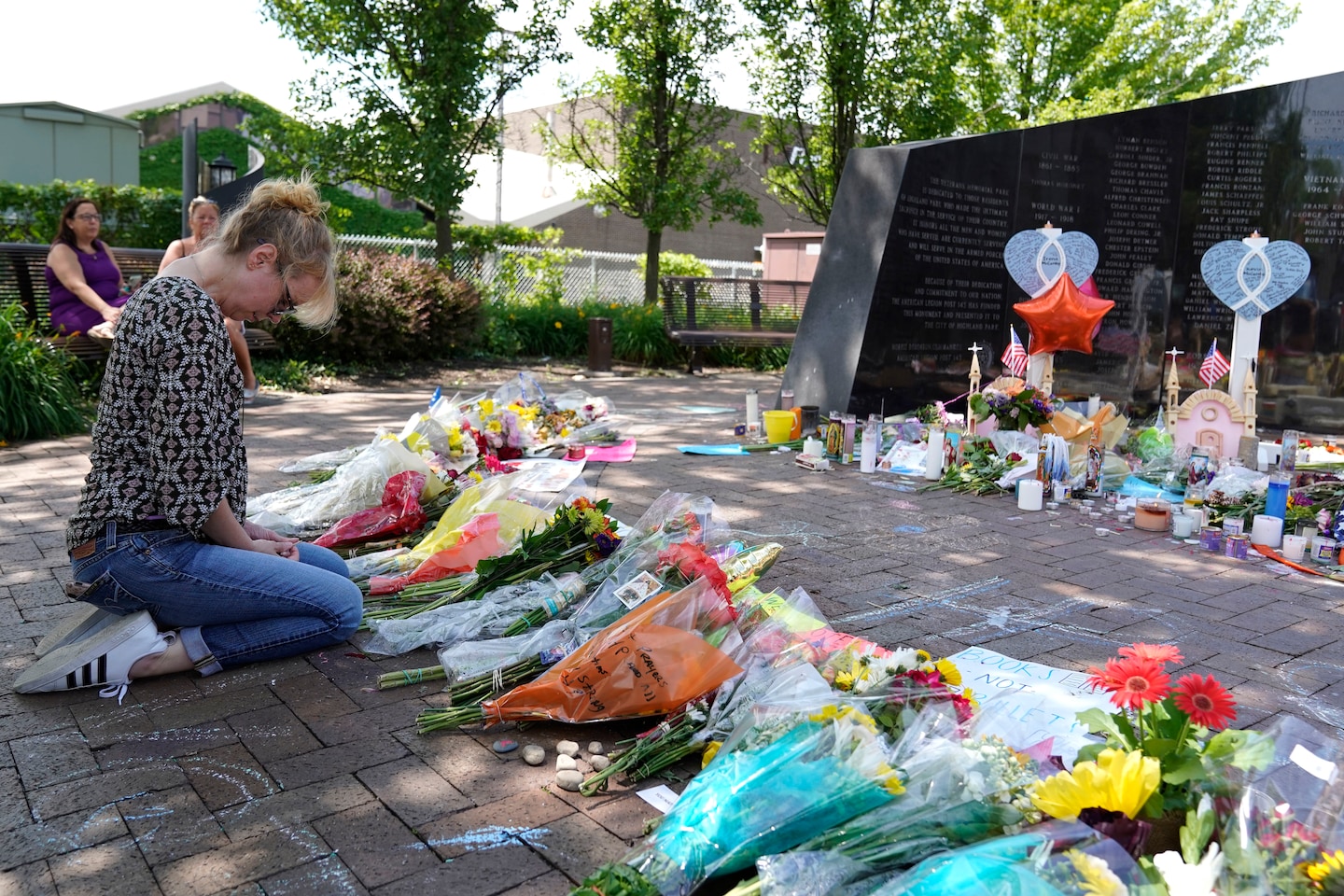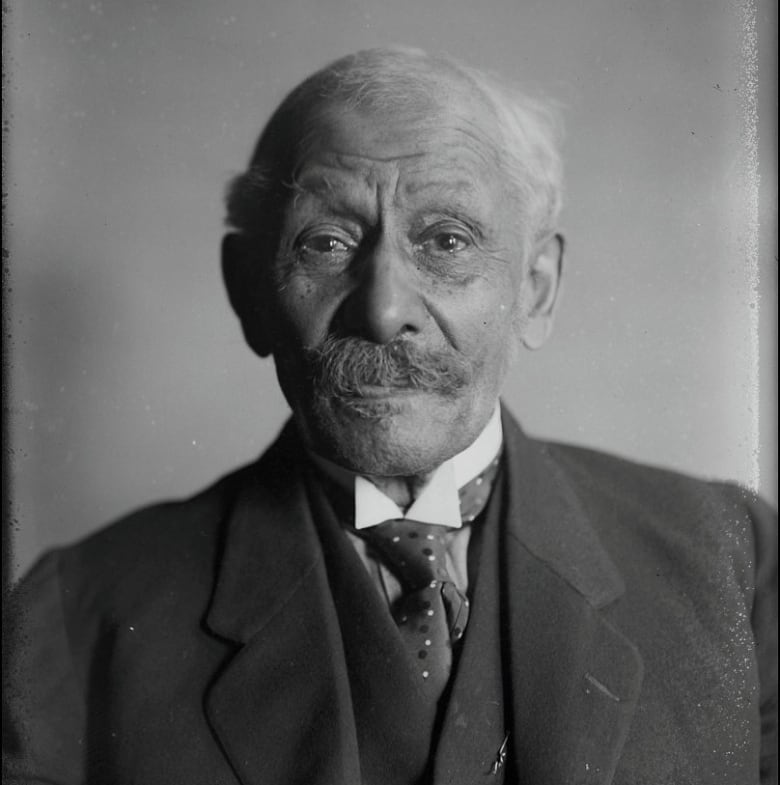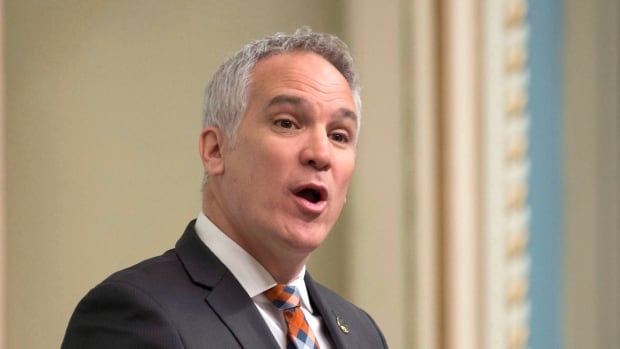Guns have dominated the headlines for more than a month. The May 24 massacre at Robb Elementary School in Uvalde, Tex. reignited discussions about the politics of guns. Four weeks later on June 23, the Senate came together to pass narrow legislation that still represented the most significant gun regulations in decades — the same day the Supreme Court made it more difficult to regulate possession of firearms in public. Then, the July Fourth holiday brought yet another bloodbath, this time at a parade in Highland Park, Ill., leaving seven people dead.
Politics
Perspective | The rise of the conservative legal movement reshaped gun politics – The Washington Post

The Court’s ruling received the least attention of these events. But it was a reminder of one of the least visible aspects of gun politics: the rise of the conservative legal movement. Since the shooting at Columbine High School in 1999, everything from frustrated teenagers and alienated men to singer Marilyn Manson and video games have received blame for mass shootings. Those on the left also blame the power of the National Rifle Association and its decades long ability to thwart any tightening of gun laws.
While these are important aspects of American gun politics, conservative legal elites have also shaped gun laws at every level in the United States. Most visibly, the conservative Supreme Court majority has handed gun rights advocates multiple victories since 2008. The role of conservative elites and legal activism in driving gun politics are part of a broader story that has reshaped American politics and law.
After the assassinations of Rev. Martin Luther King Jr. and Sen. Robert F. Kennedy in 1968, Congress passed the Gun Control Act with relatively little dissent. Constitutionally, Congress was free to do so because the governing Supreme Court precedent from 1939 enshrined the idea that the Second Amendment only protected a “collective right” to bear arms as part of militia service. The strong support for the Gun Control Act reflected the fact that gun politics were not nearly as divisive at the time. In fact, they would not become fraught until the late 1970s — what sociologist David Yamane calls Gun Culture 2.0.
The shift in the politics of guns coincided with the rise of a unique strain of conservatism, based in the South and West, which primarily attracted White suburbanites and was oriented around individual rights, government deregulation, low taxes, staunch anti-Communism and conservative social positions. The creation of new conservative think tanks, direct mail tactics and grass roots groups linked to national organizations provided the necessary infrastructure to propel these ideas and help wrest control of the Republican Party from more moderate forces.
This wider political change explains to some extent the rise of a far more militant gun movement.
This rising conservative movement helped elect Ronald Reagan in 1980, and just 16 years after the Gun Control Act, Reagan signed the 1984 Firearm Owners’ Protection Act — a signal of the rising importance of the South and West politically, as well as the triumph of individual rights over collective action and government regulation.
But the shift in gun politics also developed because of another key part of the rising conservative movement: new groups pushing a militant brand of conservative legal thinking.
Between the late 1930s and the late 1960s, liberals dominated the Supreme Court and issued seminal decisions oriented around the idea of a living Constitution, in which judges read the document in light of how society had evolved.
Conservatives abhorred this idea and the changes it produced. Richard M. Nixon pledged to reshape the Court, but his four appointments created more of a center right Court — one that limited the scope of liberal precedents rather than overturning them. During the 1980s, conservatives went back to the drawing board.
To challenge liberal jurisprudence conservatives popularized an originalist and textualist interpretation of the Constitution — resurrecting ideas that had previously been consigned to the backwaters of legal thinking. This philosophy posited that judges should not read the Constitution in light of how society had evolved, but instead with the goal of determining the original intent behind its provisions when they were drafted in 1789. The consternation that mainstream legal organizations like the American Bar Association leaned left also led to the founding of the Federalist Society in 1982 at Yale and at a handful of other universities. The society helped to promote this originalist reading of the Constitution.
The newly organized conservative legal movement quickly gained influence in the Republican Party. GOP politicians saw originalism, and members of this new legal movement as a pathway to more reliably conservative judges — ones who would undo the liberal 1960s Supreme Court rulings that conservatives loathed. The Federalist Society became a gateway for vetting potential judges to ensure that they shared conservatives’ vision for the courts and constitutional interpretation. Conservatives welcomed this as a potential antidote to ensure that future Republican appointees did not turn out like Justices Harry Blackmun and John Paul Stevens, who ended up being far more liberal than expected.
As the Federalist Society and its vision for the law gained currency among Republicans, and as Republican presidents appointed more judges in this mold to federal courts including the Supreme Court, originalism began to dislodge the idea of a living Constitution.
The newly militant gun movement took advantage of this shift by pushing what had once been a radical idea: that the prevailing interpretation of the Second Amendment as simply ensuring a collective right to bear arms as part of militia service was wrong. Instead, they argued that the amendment protected an individual right to carry firearms, rendering many gun control laws at the federal and state level suspect.
The Supreme Court had largely ignored the Second Amendment for decades, but in 2008, in District of Columbia v. Heller, a conservative five justice majority sided with the gun rights movement. For the first time — in a majority opinion written by Antonin Scalia, one of the legal thinkers at the forefront of the originalist movement and a member and steadfast supporter of the Federalist Society — the Court recognized the Second Amendment as protecting the rights of individuals to keep and bear arms.
Since Heller, the Supreme Court has seen a slew of Second Amendment cases, with the revolution wrought by this new interpretation of the Second Amendment culminating in late June, with the ruling that struck down a more-than- a-century-old law in New York that strictly regulated open carry on firearms. The decision raises the question of whether — even as the public clamors for increasing restrictions after each new mass shooting and Congress finally took a step toward addressing the issue — the Court will allow significant new restrictions on gun possession?
The conservative legal movement deserves much of the credit (or blame) for today’s changed landscape. While its influence in moving the Court to rely on originalism to overturn Roe v. Wade and eliminate the constitutional right to an abortion has received a lot of attention, its behind-the-scenes role in moving the Court to apply this once obscure legal theory to the Second Amendment has received far less scrutiny.
And barring unexpected changes in the Court’s membership, this originalist way of thinking will continue to shape what the political branches can do to address gun violence and an increasing array of hot-button issues in the years to come.
Politics
The MAGA Right is Flirting With Political Violence – Vanity Fair
The MAGA right exists in a perpetual state of overheated grievance. But as the November election nears, the temperature seems to be rising, getting dangerously high.
This week, following Gaza war protests that disrupted travel in major American cities Monday, Senator Tom Cotton explicitly called on Americans to “take matters into [their] own hands” to get demonstrators out of the way. Asked to clarify those comments Tuesday, Cotton stood by them, telling reporters he would “do it myself” if he were blocked in traffic by demonstrators: “It calls for getting out of your car and forcibly removing” protestors,” he said.
X content
This content can also be viewed on the site it originates from.
The right-wing senator’s comments came on the heels of Kari Lake, the GOP candidate for Senate in Arizona, suggesting supporters should arm themselves for the 2024 election season. “The next six months is going to be intense,” she said at a rally Sunday. “And we need to strap on our—let’s see, what do we want to strap on? We’re going to strap on our seat belt. We’re going to put on our helmet or your Kari Lake ballcap. We are going to put on the armor of God. And maybe strap on a Glock on the side of us, just in case.”
And those comments came a couple weeks after Donald Trump, who regularly invokes apocalyptic and violent rhetoric, shared an image on social media depicting President Joe Biden—his political rival—hog-tied in the back of a pick-up truck. “This image from Donald Trump is the type of crap you post when you’re calling for a bloodbath or when you tell the Proud Boys to ‘stand back and stand by,’” a Biden spokesperson told ABC News last month, referring to the former president’s dog-whistle to extremist groups during a 2020 debate and to cryptic remarks he’s made from rally stages this spring suggesting Biden’s reelection would mean a “bloodbath”—for the auto industry and for the border. This kind of thing is nothing new—not for Trump, not for his allies, and not in American history, which is what makes these flirtations with political violence all the more dangerous.
We’ve seen where this kind of reckless rhetoric can lead. Throughout Trump’s first campaign for president, it led to eruptions of violence at his rallies, which he openly encouraged: “Knock the crap out of ‘em, would you?” he told supporters of hecklers. It also inflamed tensions throughout his presidency, which culminated with his instigating a violent insurrection at the United States Capitol. According to a PBS Newshour/NPR/Marist poll this month, 20 percent of Americans believe violence may be necessary to get the country on track. A disturbing new study out of University of California-Davis found openness to political violence was even higher among gun owners, particularly those who own assault weapons, recently purchased their firearms, or carry them in public. And an October survey by the Public Religion Research Institute and the Brookings Institution suggested that support for political violence, while still limited, appears to be increasing, with nearly a quarter of respondents overall—and a third of Republicans—agreeing with the statement: “Patriots may have to resort to violence in order to save our country.”
“It looks like the temperature has gone up across the board, but especially among Republicans,” Robert P. Jones, president and founder of PRRI, told Axios of the survey last fall. That’s no accident. It’s the kind of political climate you get when a sitting senator promotes vigilantism, a Senate candidate calls on supporters to take up arms, and a major party embraces or enables a demagogue. “Political violence,” as Biden campaign communications director Michael Tyler put it a couple weeks ago, “has been and continues to be central to Donald Trump’s brand of politics.”
More Great Stories From Vanity Fair
Politics
Walking tour to celebrate Toronto's first Black politician – CBC.ca


A new walking tour this summer will celebrate the legacy of a man who literally changed the face of Toronto’s politics, Canada’s first elected politician who wasn’t white: William Peyton Hubbard.
Elected as a City Alderman in 1894, Hubbard served until 1914, including stints as acting mayor of Toronto. But east end resident Lanrick Bennett was embarrassed to say he’d never heard of him until the 2010s — when Hubbard’s name was put forward in a park naming contest in Riverdale.
In 2016, a park at Broadview Avenue and Gerrard Street E. was officially named Hubbard Park. This summer, Bennett is organizing a historical walking tour from Hubbard’s former residence on Broadview to the park, which will be lead by fellow east ender Marie Wilson, who initiated the campaign to name the green space after him.
“As a parent, I want my kids to understand that there are people that look like them that were around, that were here, that came before,” Bennett said.
“They were fighting the good fight back then.”
The tour is part of a series of Black history walking tours that Bennett will be hosting this summer to coincide with Emancipation Day in August, called #HearThis. This week, he was awarded a $1,000 grant from the charities Toronto Foundation and Volunteer Toronto to organize the walks.
He will also be digitizing the routes so people can do them on their own time.
“This entire project is about amplification,” Bennett said. “I don’t know everything about all the history within this neighborhood and within this community, but I want people to start digging.”
Park named after Hubbard in 2016
In the contest to name the park nearly a decade ago, Wilson put up flyers and approached people in the neighbourhood to tell them who Hubbard was and why they should vote for him. She learned of Hubbard from the plaque in front of his former home.
“I’m not only fascinated by history, but by forgotten history and the forgotten people in history,” she said. “I think that Hubbard fell into that category. I know that there are some people who know of him and did back then, but in a big way, I don’t think he was known.”
At the time of the park’s unveiling, Hubbard’s great-granddaughter Lorraine Hubbard said it was the first, permanent public recognition of his contributions to the city.


Aside from the fact that he was the city’s first Black politician, who always stood up for the underdog, she said her favourite fact about Hubbard was that he baked himself a birthday cake every year.
Hubbard was born near Bathurst and Bloor streets, after his parents escaped enslavement in America. But he didn’t begin his political career until he was in his 50s, after working as a baker and cab driver.
He was elected in his second attempt in one of the wealthiest and whitest wards in Toronto, which spanned University Avenue to Bathurst Street. He was reelected 14 times.
Hubbard faced and fought racism
When others wanted them privatized, Hubbard helped keep Toronto’s hydroelectric and water systems public utilities, which led to the creation of Toronto Hydro. He was also part of the city’s Board of Control, a powerful four-member group at the city’s executive level that advised the mayor on municipal spending.
Wilson said he was also an instrumental player in the creation of High Park.
“He was a champion of the underdog and he just felt that the poor people, the disenfranchised, needed what we now call green space,” she said.
While breaking barriers, Heritage Toronto’s website says Hubbard defended other marginalized groups, such as the city’s Chinese and Jewish communities, from discrimination and violence.
But being a Black man at the turn of the century, he had his own experiences of racial abuse from city councillors from other cities, Heritage Toronto says. When conducting business outside the city, he was sometimes required to carry character reference letters from the mayor.
Bennett hopes that through the tour, he can provide a context of the Black history found in Toronto’s east end.
“It’s kind of cool to be living where we do and to know that history is around you and it’s literally outside of your front door,” he said.
For more stories about the experiences of Black Canadians — from anti-Black racism to success stories within the Black community — check out Being Black in Canada, a CBC project Black Canadians can be proud of. You can read more stories here.


Politics
CAQ whip set to jump into federal politics as candidate for Poilievre's Conservatives – CBC.ca


Federal Conservative Leader Pierre Poilievre has dipped into the Quebec government ranks to add a new candidate to his team.
Éric Lefebvre, the Coalition Avenir Québec government whip, is leaving the province’s ruling party and will sit as an Independent before joining the Tories ahead of the next federal election.
Poilievre wrote on X, formerly known as Twitter, that he was proud to have Lefebvre join the Conservative team.
On Tuesday night, Lefebvre announced he was leaving the CAQ caucus but would continue to represent the riding of Arthabaska, northeast of Montreal, as an Independent.
Quebec Premier François Legault wrote on X that he asked Lefebvre to withdraw from caucus.
Lefebvre, who was unsuccessful in a 2008 run for the federal Conservatives, first won the Arthabaska riding in a 2016 byelection and was re-elected in 2018 and 2022.
The next federal election must be held by October 2025.
-
News23 hours ago
Loblaws Canada groceries: Shoppers slam store for green onions with roots chopped off — 'I wouldn't buy those' – Yahoo News Canada
-
Business22 hours ago
Rupture on TC Energy's NGTL gas pipeline sparks wildfire in Alberta – The Globe and Mail
-
Investment21 hours ago
Saudi Arabia Highlights Investment Initiatives in Tourism at International Hospitality Investment Forum
-



 Tech15 hours ago
Tech15 hours agoCytiva Showcases Single-Use Mixing System at INTERPHEX 2024 – BioPharm International
-
Art22 hours ago
Squatters at Gordon Ramsay's Pub Have 'Left the Building' After Turning It Into an Art Café – PEOPLE
-



 Politics21 hours ago
Politics21 hours agoThe Earthquake Shaking BC Politics
-



 Science20 hours ago
Science20 hours agoNasa confirms metal chunk that crashed into Florida home was space junk
-



 Science22 hours ago
Science22 hours agoFederal government announces creation of National Space Council – CBC News











